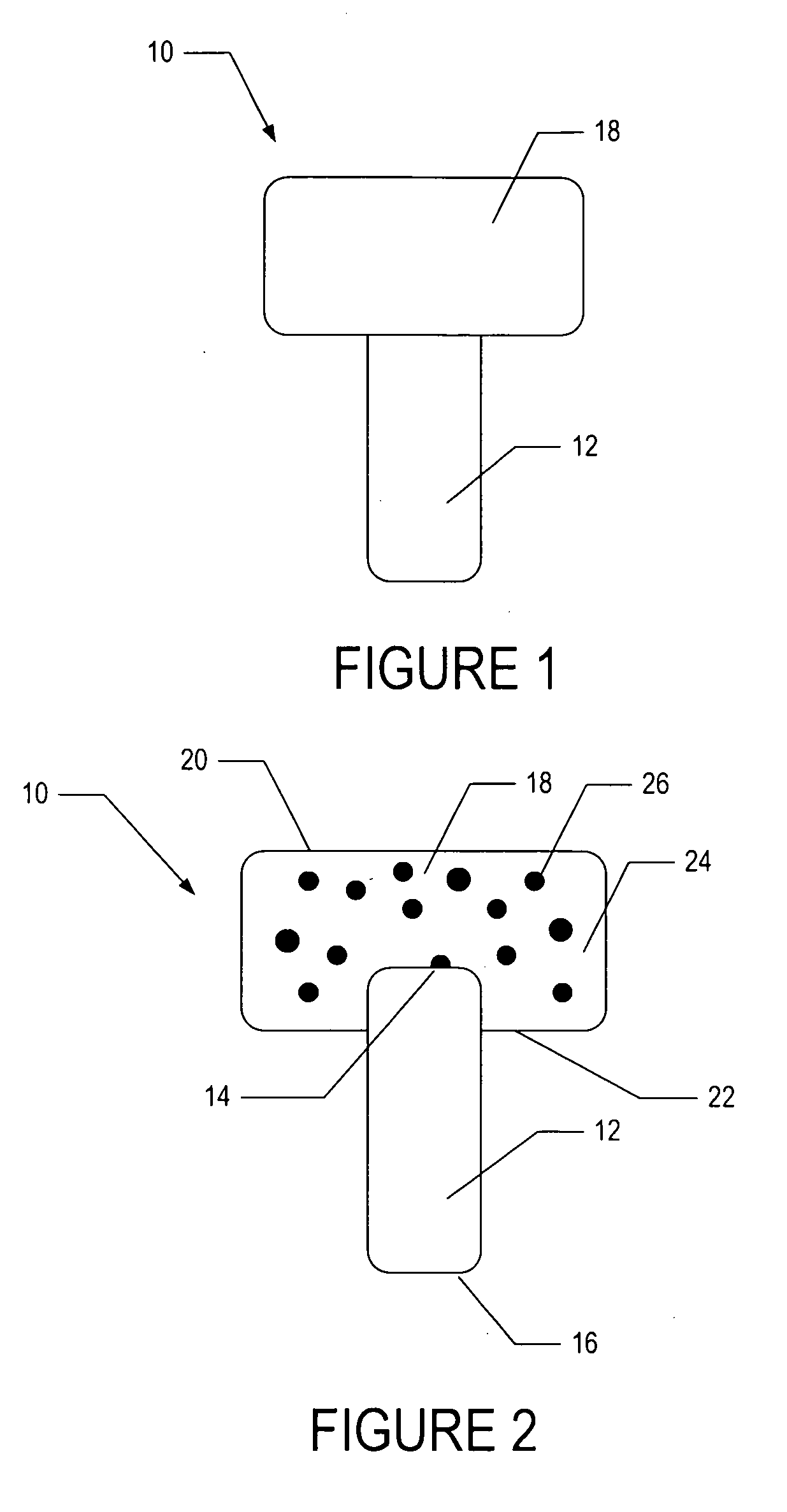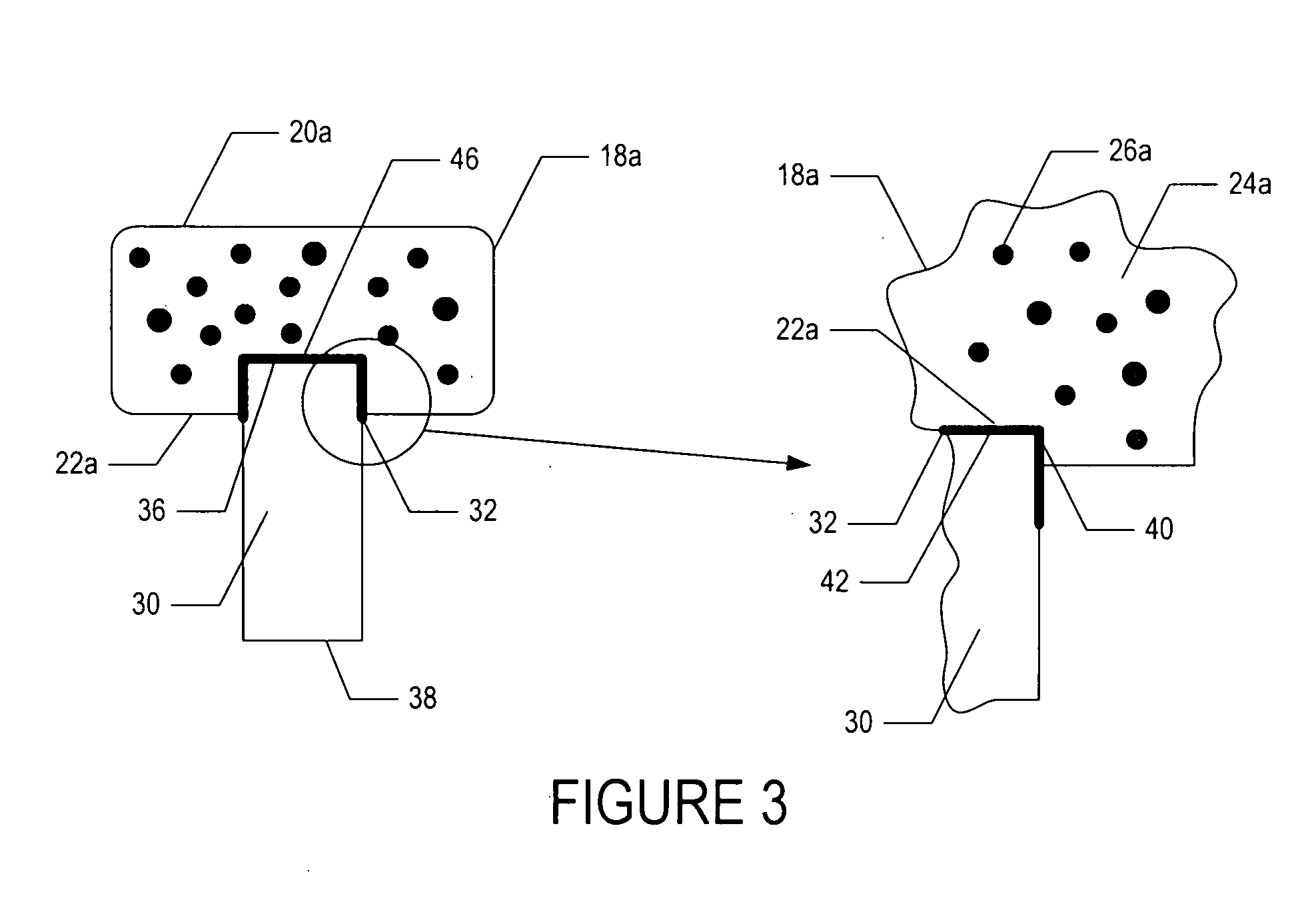Synthetic osteochondral composite and method of fabrication thereof
- Summary
- Abstract
- Description
- Claims
- Application Information
AI Technical Summary
Benefits of technology
Problems solved by technology
Method used
Image
Examples
example 1
Mesenchymal Stem Cells were Obtained from Bone Marrow of NZW Rabbits
[0043]To obtain the chondrogenic cells to be incorporated into the various embodiments of the osteochondral composites discussed below, the following experiment was conducted. Bone marrow-derived mesenchymal stem cells (MSCs) were prepared from euthanized New Zealand White (NZW) rabbits, using established methods.
[0044]Marrow plugs were removed from the femur or humerus of NZW rabbits with intramedullary-pin drilling and a bone curette and then transferred to 50-ml centrifuge tubes containing 25-ml of a culture medium containing DMEM low glucose, 10% fetal bovine serum (FBS), and penicillin / streptomycin / amphotericin (p / s / a). After vortexing and spinning for 5 minutes at 1,500 rpm, the fat layer and medium were removed and the pellet was then resuspended in 8-ml of culture medium and vortexed briefly. The 8-ml suspension was drawn into a 10-ml syringe with an 18-gauge needle and transferred to a new 50-ml centrifuge ...
example 2
Bone Marrow Derived Mesenchymal Stem Cells were Cultured with Hydrogel Polymers
[0047]The bone marrow derived MSCs obtained using the methods described in Example 1 were trypsinized with 0.25% trypsin in 1 mM EDTA, counted with a hemocytometer, and then resuspended by mixing the MSCs with poly(ethylene glycol) diacrylate (PEGDA) / photoinitiator solution at a concentration of 5-10×106 cells / cm3. The cell culture medium was further supplemented with 10 ng / ml TGF-β. Cell cultures were incubated for one week in 95% air / 5% CO2 at 37° C. with a fresh medium change every 3-4 days. After one week of culture at these conditions, chondrogenic differentiation of MSCs was achieved.
example 3
Osteochondral Composites were Fabricated using Bioactive Glass and PEG Hydrogel
[0048]To demonstrate the feasibility of fabricating an osteochondral composite having a PEG hydrogel mechanically interlinked with a bioactive glass base, the following experiment was conducted.
[0049]In one embodiment, a bioactive glass, designated 13-93, with the composition 53 wt % SiO2, 20 wt % CaO, 6 wt % Na2O, 12 wt % K2O, 5 wt % MgO, and 4 wt % P2O5 was formed into cylindrical bases. Porous 13-93 bioactive glass cylinders (3 mm diameter×3.5 mm long) were prepared by pouring glass particles ranging in size from 212-325 μm into a graphite mold, and sintered for 15 min at 700° C. to form a network of particles.
[0050]PEG hydrogel was prepared by dissolving poly(ethylene glycol)diacrylate (PEGDA) (Shearwater, Huntsville, Ala.) in sterile phosphate buffer saline (PBS) supplemented with 1% penicillin and streptomycin (Gibco, Carlsbad, Calif.) to a final solution of 10% w / v. A biocompatible ultraviolet phot...
PUM
 Login to View More
Login to View More Abstract
Description
Claims
Application Information
 Login to View More
Login to View More - R&D
- Intellectual Property
- Life Sciences
- Materials
- Tech Scout
- Unparalleled Data Quality
- Higher Quality Content
- 60% Fewer Hallucinations
Browse by: Latest US Patents, China's latest patents, Technical Efficacy Thesaurus, Application Domain, Technology Topic, Popular Technical Reports.
© 2025 PatSnap. All rights reserved.Legal|Privacy policy|Modern Slavery Act Transparency Statement|Sitemap|About US| Contact US: help@patsnap.com



